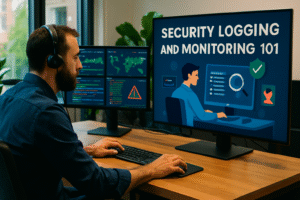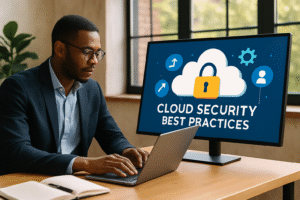
Cyber hygiene for IT professionals
In the ever-evolving landscape of technology, the importance of cyber hygiene for IT professionals cannot be overstated. As developers and testers, our digital footprints extend far beyond the lines of code we write or the tests we execute. Every online action, every repository we access, and every tool we use can contribute to our organization’s security posture—or expose it to risk. In this interconnected world, practicing robust cyber hygiene is not just a technical requirement but a professional duty.
Understanding Cyber Hygiene: More Than Just a Buzzword
Cyber hygiene is often described as the set of practices and steps that IT professionals take to maintain the health and security of their digital environments. But it’s more nuanced than simply updating software or running antivirus scans. For developers and testers, it involves a persistent mindset and a set of behaviors ingrained in daily workflows.
“Security is not a product, but a process.” — Bruce Schneier
This perspective is crucial. Security isn’t a checkbox, but a continuous journey that involves vigilance, learning, and adaptation. Whether you’re an entry-level QA engineer or a senior backend developer, embracing cyber hygiene means understanding the why behind every security practice, not just the how.
Core Principles of Cyber Hygiene for IT Professionals
Let’s delve into the essential everyday security practices that every developer and tester should adopt:
1. Password Management: The Foundation of Digital Identity
Passwords remain the first and often only barrier between malicious actors and sensitive systems. The reuse of passwords across multiple services or the use of weak passwords is still one of the most common causes of security breaches.
Best Practices:
- Utilize a reputable password manager to generate and store unique, complex passwords for all services.
- Enable multi-factor authentication (MFA) wherever possible, especially for source code repositories, CI/CD tools, and cloud platforms.
- Regularly review access permissions and remove unnecessary or outdated accounts.
2. Software Updates and Patch Management
Outdated libraries, frameworks, and tools are a goldmine for attackers. As a developer or tester, you likely use a multitude of third-party packages and dependencies in your daily work.
Do not ignore those update prompts. Even minor updates can contain crucial security patches that protect against newly discovered vulnerabilities.
Best Practices:
- Set up automated dependency checks in your CI/CD pipelines to flag outdated or vulnerable packages.
- Keep your IDEs, browsers, and operating systems up to date.
- Subscribe to security advisories for the languages and frameworks you use most frequently.
3. Code and Repository Security
Source code is the lifeblood of any tech organization. Exposing sensitive data through code—such as hardcoded credentials or API keys—can have catastrophic consequences.
Best Practices:
- Never commit sensitive information to repositories. Use environment variables and secure secret management tools.
- Employ pre-commit hooks and static analysis tools to scan for accidental leaks.
- Restrict repository access based on the principle of least privilege. Not everyone needs write access to production code.
4. Device and Endpoint Security
Developers and testers often work across multiple devices—laptops, desktops, tablets, and even smartphones. Each device is a potential entry point for attackers.
Best Practices:
- Encrypt all devices used for work with strong, unique passwords or biometrics.
- Install reputable antivirus and firewall solutions, and keep them updated.
- Avoid using public Wi-Fi for work-related activities, or use a trusted VPN if necessary.
Secure Collaboration: Working Safely in Distributed Teams
Modern IT professionals rarely work in isolation. Collaboration tools such as Slack, Microsoft Teams, Jira, and shared cloud drives are fundamental to team productivity. Yet, they also represent potential vectors for security breaches if not used responsibly.
Guidelines for Secure Collaboration:
- Share sensitive files only through approved, encrypted channels.
- Regularly audit shared documents and permissions to ensure only authorized personnel have access.
- Be wary of phishing attempts, even from seemingly trusted colleagues. Verify unexpected requests via a separate communication channel.
“The biggest threat to information security is often not the technology, but the people using it.”
Testing Securely: The Tester’s Responsibility
For QA engineers and testers, the responsibility for cyber hygiene goes beyond personal device and credential management. Test environments are often less protected than production systems, making them attractive targets for attackers.
Key Practices for Testers:
- Use anonymized or synthetic data wherever possible to avoid leaking real user information.
- Segregate test environments from production, and apply the same security controls to both.
- Report and document security flaws discovered during testing, following responsible disclosure protocols.
Testers should also be familiar with common security testing tools and methodologies, such as static and dynamic analysis, fuzz testing, and basic penetration testing techniques. Security is a feature, not a bug.
Neurodiversity and Cyber Hygiene: Inclusive Security Practices
As workplaces become more diverse, it’s essential to design cyber hygiene protocols that are accessible and inclusive for neurodivergent professionals, such as those with ADHD, autism, or dyslexia.
Inclusive Practices:
- Provide clear, step-by-step security procedures with visual aids or flowcharts.
- Offer training in various formats—written, video, interactive—to suit different learning preferences.
- Encourage a culture where questions about security practices are welcomed, not stigmatized.
“Diversity in IT isn’t just about who is at the table—it’s also about making sure everyone is equipped to contribute safely and confidently.”
Women in Tech and the Importance of Cyber Hygiene
Women in technology often face unique challenges, from underrepresentation in security teams to increased targeting by certain types of social engineering attacks. Promoting cyber hygiene in a way that empowers all team members, regardless of gender, is key to building resilient organizations.
Mentorship programs, women-led security workshops, and visible female role models in cybersecurity can make a significant difference. Security is a shared responsibility and benefits from a range of perspectives and experiences.
Continuous Learning: Staying Ahead of Threats
The threat landscape changes rapidly. New vulnerabilities are discovered daily, and attack techniques evolve just as quickly. For IT professionals, stagnation is the enemy of security. Make it a habit to:
- Participate in regular security training and simulated phishing exercises.
- Join relevant forums and follow trusted sources for security news and advisories.
- Share knowledge with your team—security is stronger when it’s collaborative.
Resources for Ongoing Cyber Hygiene
Here are a few trusted resources to keep your security skills sharp:
- CyberSeek — Pathways and resources for cybersecurity careers.
- OWASP — Open Web Application Security Project’s guides and tools.
- CISA — Cybersecurity and Infrastructure Security Agency updates and alerts.
- Cybrary — Free and paid cybersecurity training modules.
Fostering a Culture of Cyber Hygiene
Ultimately, cyber hygiene is not a solitary pursuit. It thrives in cultures where security is integrated into every facet of the development lifecycle—from planning and coding to testing and deployment.
Encourage open discussions about security risks and solutions. Celebrate responsible behavior and learning from mistakes. Remember, the goal is not perfection, but progress—every small step strengthens your team and your organization.
“Cyber hygiene is the everyday kindness we show to our future selves and colleagues—it’s the quiet shield that lets innovation flourish without fear.”
In a world where the pace of technology accelerates every year, cyber hygiene remains a steadfast companion for IT professionals. By weaving these practices into the fabric of our daily work, we not only protect our own careers and creations, but also contribute to a safer, more inclusive, and innovative digital world for everyone.


